Rocking Horse Works
Chat to Alison: 07951 118207
07951 118207
Rocking Horse Works
Chat to Alison: ![]() 07951 118207
07951 118207
There are many methods in which experts use to identify a rocking horse. When you know where to look, you can not only find the maker of the horse, but even the decade it was made.
The most common horses we see in the workshop are Ayres, Collinson, Lines and Baby Carriage.
We at the Rocking Horse Works are always happy to help and will use our years of expert knowledge to identify your horse free of charge. Simply send us a photograph in the post or via email and we will get back to you to confirm the identity of your loyal friend.
In the meantime, have a look at our guide to identifying your horse from the comfort of your own home.
In this guide we have included the most common makers and two other popular manufacturers that are less well recognised. If you have not managed to identify your horse amongst our examples or would simply like more information on the history of rocking horses and their makers, please don't hesitate to get in touch. Alison will be happy to help! 01630 653 194 / alison@rockinghorseworks.co.uk
Paintwork - Dappling,dark and bold, a lot of black used.Bright red garish eyes, nostril and mouth.
Eyes - Upholstery pins were used for eyes.
Hair - Mane and tail, both curly.
Tack - Red corduroy, used for saddle middle, the rest of the saddle made from leatherette.Bridle, nailed on, many decorative tacks used on dawdle and bridle.
Stand - Rectangular linear pillars, Diamond cut out on top of pillars
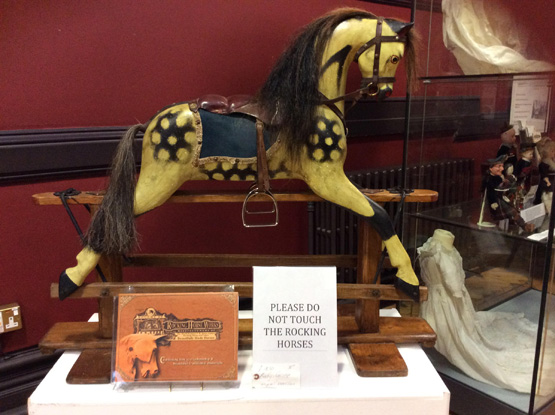
(Often misconstrued as Collinson Horses)
Paintwork - Dappling, a lot of bold black used, but in a more patched finer format than that of a Collinson
Eyes - Glass eyes were used
Hair - curly cows tail hair (as Collinsons)
Tack - saddle has no saddle block,The saddle itself made from fabric, sometimes velvet, the skirt and rest of tack made from leatherette, sometimes real leather was used. The blanket, or numbna, made from cotton.
Stand Rectangular linear posts Rounded ends on the horizontal rails, Brackets or hinges on top of stand have three holes in. BCL Rambler Transfer on base of stand.
Paint work Beautiful, subtle face and body painting.
Eyes - Glass eyes
Hair - Horse hair mane and tail
Tack - Leather padded saddle,Blankets, Classic shape with angular pointed corners
Stand - Beautiful turned pillars, but with indented collar.Brackets,or hinges have three bolt/screw holeBrackets sometimes have initials of company engraved on underside
Also Thistle logo sometimes included on front of martingale, seen on the right.
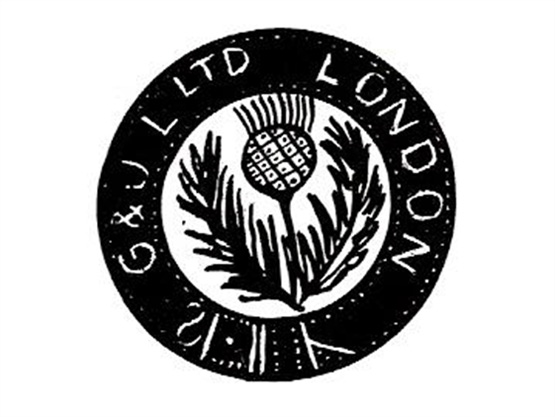
Special G & J Lines Brothers model
More streamlined features on the head
Featured a removable saddle and nailed on bridle
Fixed blanket
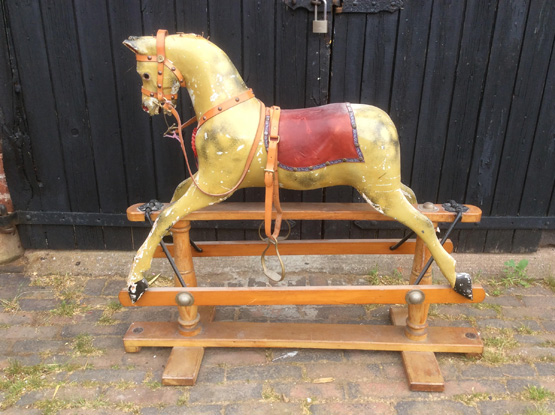
Body Shape - Forward facing head Stocky body Unusual profiled legs(They used a Leeway carver)
Hair- real horse hair mane and tail
Tack - Leather saddle and padded saddle
Stand - Classic pillars, similar to Ayres. Brackets, two pairs each end. Horizontal rails, had rounded ends with cut out profile each end.
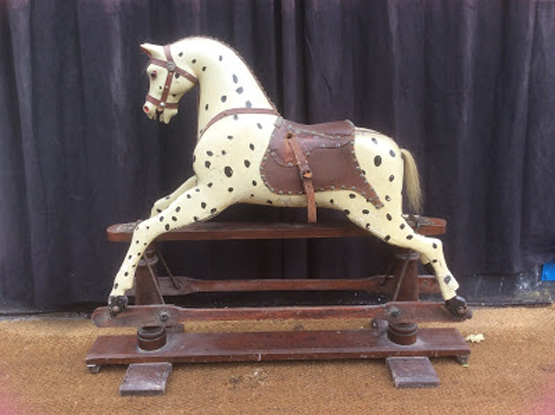
Body - vertical head, simple stocky body shape shapeless straight uprightish legs.
Paintt - basic Dappling
Tack - leather padded saddle, no saddle block
Stand - pillars, thin and unshapley. Horizontal rails had rounded ends
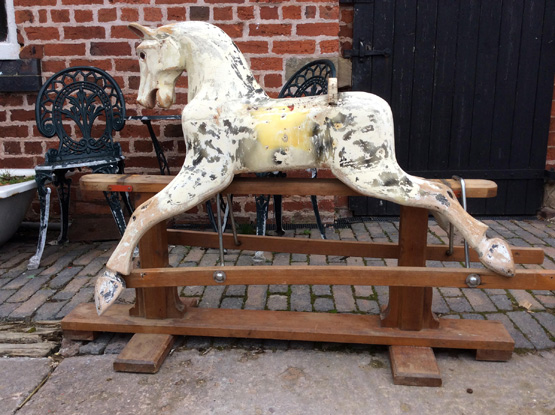
circa 1864, to out break of First World War 1914
Shape - finely carved and shape, with lovely intricate heads.Heads often turned to one side.
Paintwork - beautiful subtle Dappling, heads exquisitely painted.
Eyes - glass eyes always used, beautifully painted and highlighted.
Hair- long horse hair used. Dapple, light grey and brown being most used colours.
Tack - real leather padded saddle . Bridles, made out of leather, occasionally removable. The blanket, or numna, made out of cotton edged in white braid. Blanket cut out in square shape with slightly round corners.
Stand - normally made from pine, with beautiful classic turned pillars. Brackets, or hinges, have four bolt holes in each.
(Ayres horses were quite often mounted on bow rockers)
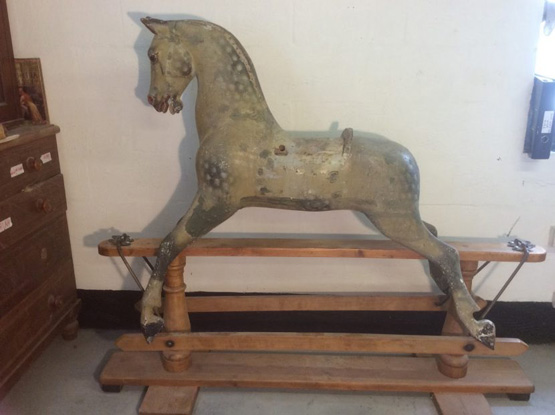
Rocking Horse Workshop,
Unit 1 Walkmill Business Park,
Market Drayton TF9 2HT
Phone ![]() +44 1630 653194
+44 1630 653194
Chat ![]() +44 7951 118207
+44 7951 118207
Online gallery of images
Privacy policy and Cookie statement
© 2003- Rocking Horse Works
Powered by seren technologies